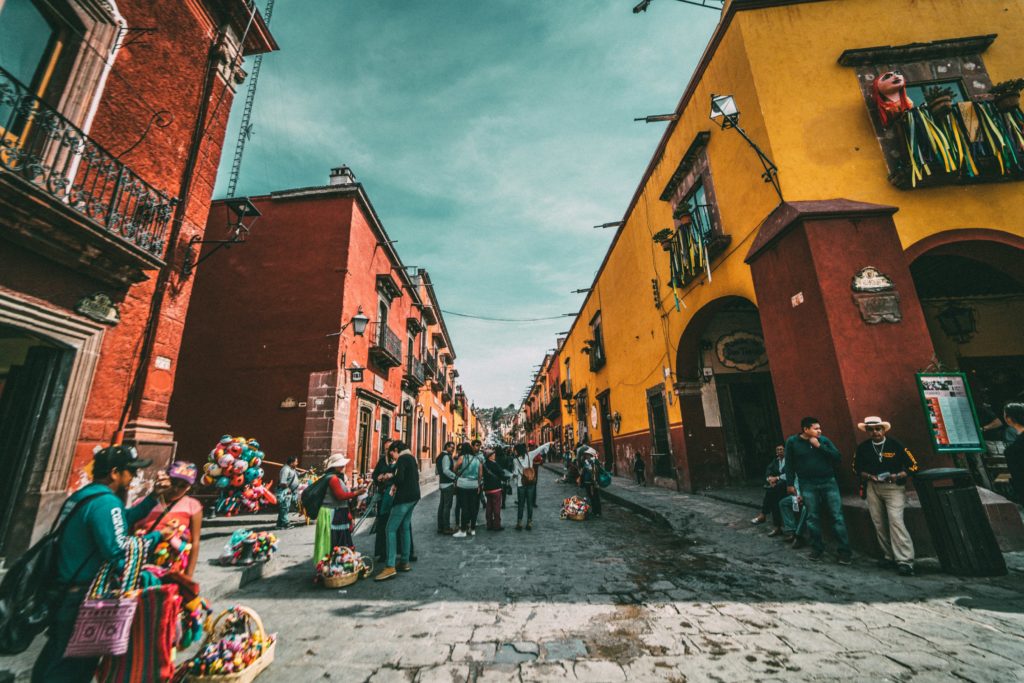Commercial Feature
Seeking to Expand Your Vocabulary? How Much Mexican Slang Do You Know?

Expanding your vocabulary is like adding colour to a black-and-white canvas. It not only enhances your communication skills but also enriches your understanding of different cultures and languages. One fascinating area to explore is Mexican slang, a vibrant and dynamic aspect of the Spanish language. In this blog post, we’ll delve into the world of Mexican slang, exploring its significance, common phrases, and why it’s worth incorporating into your linguistic repertoire.
Why Mexican Slang Matters?
1. Cultural Insight
Mexican slang provides a window into the rich tapestry of Mexican culture. It reflects the creativity, humour, and everyday life of the people. When you learn Mexican slang, you gain deeper insights into the customs, traditions, and mindset of Mexican society.
2. Enhancing Communication
Language is not static; it evolves. Incorporating slang into your vocabulary allows you to communicate more effectively and naturally with native speakers. It adds authenticity to your language skills and helps you connect on a deeper level.
3. Breaking Barriers
Language barriers can hinder effective communication. However, by learning slang, you break down these barriers and create a bridge between cultures. It shows respect for the nuances of the language and demonstrates your willingness to engage with others on their terms.
Common Mexican Slang Phrases
1. ¿Qué onda? (What’s up?)
This ubiquitous phrase is equivalent to “What’s up?” in English. It’s a casual way to greet someone and inquire about their well-being. Use it with friends, family, or acquaintances to strike up a conversation.
2. Chido/a (Cool)
When something is “chido” or “chida,” it means it’s cool, awesome, or great. Mexicans often use this slang to express admiration or approval for something impressive or enjoyable.
3. ¡Órale! (Wow!/Alright!)
“¡Órale!” is a versatile expression used to convey surprise, excitement, agreement, or encouragement. It’s a lively exclamation that adds emphasis to a statement or situation.
4. No manches (No way/Get out of here)
When you’re in disbelief or astonishment, you might exclaim, “No manches!” This phrase conveys incredulity or shock, similar to saying, “No way!” or “Get out of here!” in English.
5. Estar crudo/a (To be hungover)
If you’ve had a bit too much to drink the night before and wake up feeling rough, you’re “crudo” or “crude.” This colloquial term describes the state of being hungover and is commonly heard in Mexico.
6. Echarle ganas (To give it your all)
When facing a challenge or pursuing a goal, Mexicans often encourage each other to “echarle ganas,” meaning to give it your all or put in maximum effort. It’s a motivational phrase that inspires perseverance and determination.
7. ¡Qué padre! (How cool!/How awesome!)
“¡Qué padre!” is another way to express admiration or enthusiasm for something. It’s a positive exclamation used to compliment or show appreciation for a person, place, or experience.
Incorporating Mexican Slang Into Your Vocabulary
1. Immerse Yourself in Mexican Culture
To truly grasp Mexican slang, immerse yourself in the culture. Watch Mexican movies and TV shows, listen to Mexican music, and engage with native speakers whenever possible. Pay attention to how slang is used in different contexts and practice incorporating it into your conversations.
2. Practice Regularly
Learning slang takes practice, so make it a regular part of your language-learning routine. Use flashcards, language apps, or online resources to familiarize yourself with common slang expressions. Practice speaking and listening to ensure you’re comfortable using slang in real-life situations.
3. Be Open-Minded
Embrace the quirks and nuances of Mexican slang with an open mind. Don’t be afraid to make mistakes; learning slang is all about experimentation and adaptation. Be receptive to feedback from native speakers and continuously refine your understanding and usage of slang expressions.
Conclusion
Expanding your vocabulary to include Mexican slang opens doors to new cultural experiences and deepens your connection with the Spanish language. By incorporating slang into your repertoire, you enhance your communication skills, gain insight into Mexican culture, and break down linguistic barriers. So, ¿qué esperas? (What are you waiting for?) Start incorporating Mexican slang into your vocabulary today and ¡ánimo! (go for it)!
 News / Cambridge academics vote to keep controversial forced retirement policy24 July 2024
News / Cambridge academics vote to keep controversial forced retirement policy24 July 2024 News / Cambridge courses need ‘structural changes’ to tackle excessive workload, report finds23 July 2024
News / Cambridge courses need ‘structural changes’ to tackle excessive workload, report finds23 July 2024 News / Cambridge students to dismantle pro-Palestine encampment, following university agreement24 July 2024
News / Cambridge students to dismantle pro-Palestine encampment, following university agreement24 July 2024 News / Cambridge student jailed for planned M25 disruption18 July 2024
News / Cambridge student jailed for planned M25 disruption18 July 2024 Lifestyle / Self-dating in Cambridge26 July 2024
Lifestyle / Self-dating in Cambridge26 July 2024
Sponsored Links
Partner Links




